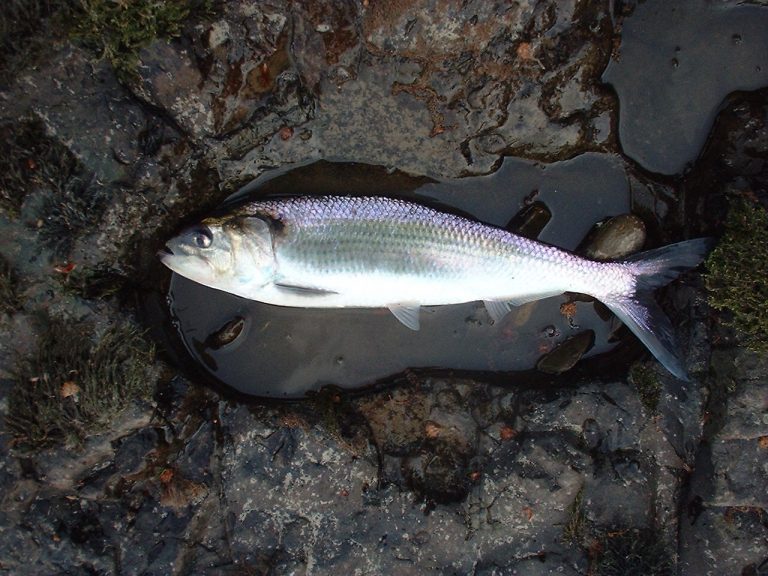Source: Natural Resources Wales
This month, Natural Resources Wales (NRW) is asking people for their help to record sightings of a rare fish found in Welsh rivers.
In June, thousands of Shad spawn in three rivers in South Wales, the Wye, Usk and Tywi. But NRW is interested in possible sightings elsewhere too, especially in North Wales.
There are two species, the allis shad (Alosa alosa) and twaite shad (Alosa fallax) which spend most of their lives at sea however, at this time of year, they move to rivers to spawn. After spawning many of them die, but each female produces thousands of eggs to start the next generation. Shad populations – which are threatened in the UK and Europe – seem to be doing well in Wales.
Tristan Hatton-Ellis, Freshwater Ecosystems Team Leader at Natural Resources Wales said;
“Like the swallow, shads are a sign of summer on the rivers and we are interested in shad records from anywhere in Wales but particularly from rivers in North Wales where we think there may be small populations.
“Look out for them at dusk in the middle to lower reaches of rivers, where you can see them circling one another.
“Later in the night, they spawn with a lot of noisy splashing as the males chase the females.”
Interesting Facts about Shad
- Shad are a protected species because they are so rare.
- Allis and twaite shad are the only members of the herring family found in freshwater in the UK. They have various other names including the May Fish, King of the Herring, and Bony Horseman.
- Shad were once widely fished in Europe and were formerly eaten in Britain. In the Severn Estuary during 19th century, shad made up about one third of all catches, their value rivalling salmon.
- Shad spawning takes place in flowing water over stones and gravel. Eggs take about four to six days to hatch. The young fish then drop quickly downstream to estuaries and inshore waters where they feed on small shrimps and grow rapidly.
- Shad can live for 10 years. Females grow faster than males.
Tristan Hatton-Ellis added:
“River or sea anglers sometimes catch them by accident, and you may also come across carcasses of fish that have either died naturally or been caught by otters.
“If you do catch a shad, please take a photograph and carefully return it to the river, minimizing handling as they are more delicate than many other fish.”
If you see a shad or any other interesting wildlife, please send the record to one of the Local Records Centres across Wales.
There are four centres covering different parts of the country (see www.lercwales.org.uk) who store the information.
Photographs of shad can be sent to Tristan.hatton-ellis@naturalresourceswales.gov.uk for identification.

